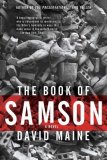Summary | Excerpt | Reading Guide | Reviews | Read-Alikes | Genres & Themes | Author Bio

The story of a momentous undertaking -- an attempt to clone Christ. Brilliantly conceived, masterfully written, this soaring novel is a triumph, and a touching and unexpected love story, born amid swirling events.
"It never failed to move Felix, this image on the cloth, viewed with scorn or veneration by millions over centuries ..."
So begins a virtual autopsy of the Shroud of Turin in J R Lankford's sweeping novel that mixes medical high tech with the author's obvious love of people, cultures and religions.
The Jesus Thief is the story of a momentous undertaking -- an attempt to clone Christ.
At its center is Dr. Felix Rossi, a wealthy microbiologist who burns with unspoken questions as he leads a scientific investigation of the Shroud. Do the threads contain the blood of Jesus? Is the DNA still intact?
Later at his Upper East Side New York home, he must avoid the scrutiny of a fiancée, a devoted sister, and a prying maid as he works. When a reporter suddenly appears, hidden allegiances form against him. He must find a modern Mary without delay.
The Jesus Thief takes the reader from society galas to Irish pubs to Harlem churches to Italy in Fascist and current times with all the suspense of a detective novel, the drama of a thriller, and the periodic chills of high adventure. It tells of lost family ties and a lost heritage, of a man's search for God and a poor woman's yearning to be special. It tells a touching and unexpected love story, born amid swirling events.
Brilliantly conceived, masterfully written, this soaring novel is a triumph. You will believe every word and haunt bookstores in hope of a sequel.
Author’s Note
In 1988, a scientific team took samples from The Shroud of Turin, a 14 by 3-1/2 foot piece of ancient, handmade linen purported to be the burial cloth of Christ. The samples were subjected to radiocarbon tests in labs in Arizona, Oxford, and Zurich. All three labs dated the Shroud’s linen between AD 1260 - 1390.
It seemed that the most famous winding sheet in the world was, after all, one of the many fake Christian relics produced in Europe around this time—few of which had ever been near Jerusalem, much less the crucified body of Jesus Christ.
Unconvinced, two Shroud experts subsequently announced, "We believe the Shroud has been patched … with material from the sixteenth century." Was the carbon dating done on part patch, part Shroud, skewing the results?
The historical record could indeed imply that portions removed from the edges—perhaps as early as the reign of Charles IV of Bohemia—were later replaced or repaired, commingling first century and sixteenth century threads in the corner from which the radiocarbon test samples came. A renowned textile expert examined a sample and said, "There is no question that there is different material on each side … It is definitely a patch."
In 2002, chemical analysis confirmed these experts were right. The authenticity of the Shroud became more plausible, but its Pontifical Custodians have not so far rejoiced, having newly removed all patches from the Holy Cloth.
Unless and until the Church approves new tests, the faithful must rely on results from the previous scientific investigation. The 1978 Shroud of Turin Research Project said in its Final Report: "We can conclude for now that the Shroud image is that of a real human form of a scourged, crucified man. It is not the product of an artist. The bloodstains are composed of hemoglobin and also give a positive test for serum albumin. The image is an ongoing mystery."
Meanwhile, one part of the puzzle seems to have been solved. Two highly regarded scientists associated with universities in Jerusalem and North Carolina studied pollen samples taken from the Shroud and concluded their source was a plant that grows in Israel, Jordan, and Sinai and nowhere else on earth.
The Jesus Thief is a marvelous novel. It explores the possibility that blood from the Shroud of Turin could be used to clone Christ. This subject matter could easily result in sensationalist drivel, but instead Lankford has crafted an exciting and thought-provoking story which examines the feasibility of such an event, as well as its moral and physical implications. The characters are well-developed and their motives for taking part in such an extraordinary act are realistically complex and nuanced. The way they each do or don't come to terms with their actions provides a vehicle for Lankford to deal with weighty issues, leaving readers to draw their own theological conclusions. In short, this is a lucid and accomplished novel with an utterly riveting plot that twists and turns to a thrilling conclusion.

If you liked The Jesus Thief, try these:

by David Maine
Published 2007
In The Book of Samson, David Maine has created an unforgettable portrait of a man who believes he is touched by the hand of God---then instructed by that God to slaughter his enemies.

by James Rollins
Published 2006
During a service at a cathedral in Cologne, Germany, a band of armed intruders unleash a nightmare of blood and terror, ruthlessly gunning down worshippers and clergy alike. As they flee the carnage they carry a prize that could reshape the world. The Vatican is in turmoil, and Lieutenant Rachel Verona of Rome's carabinieri is assigned to lead...